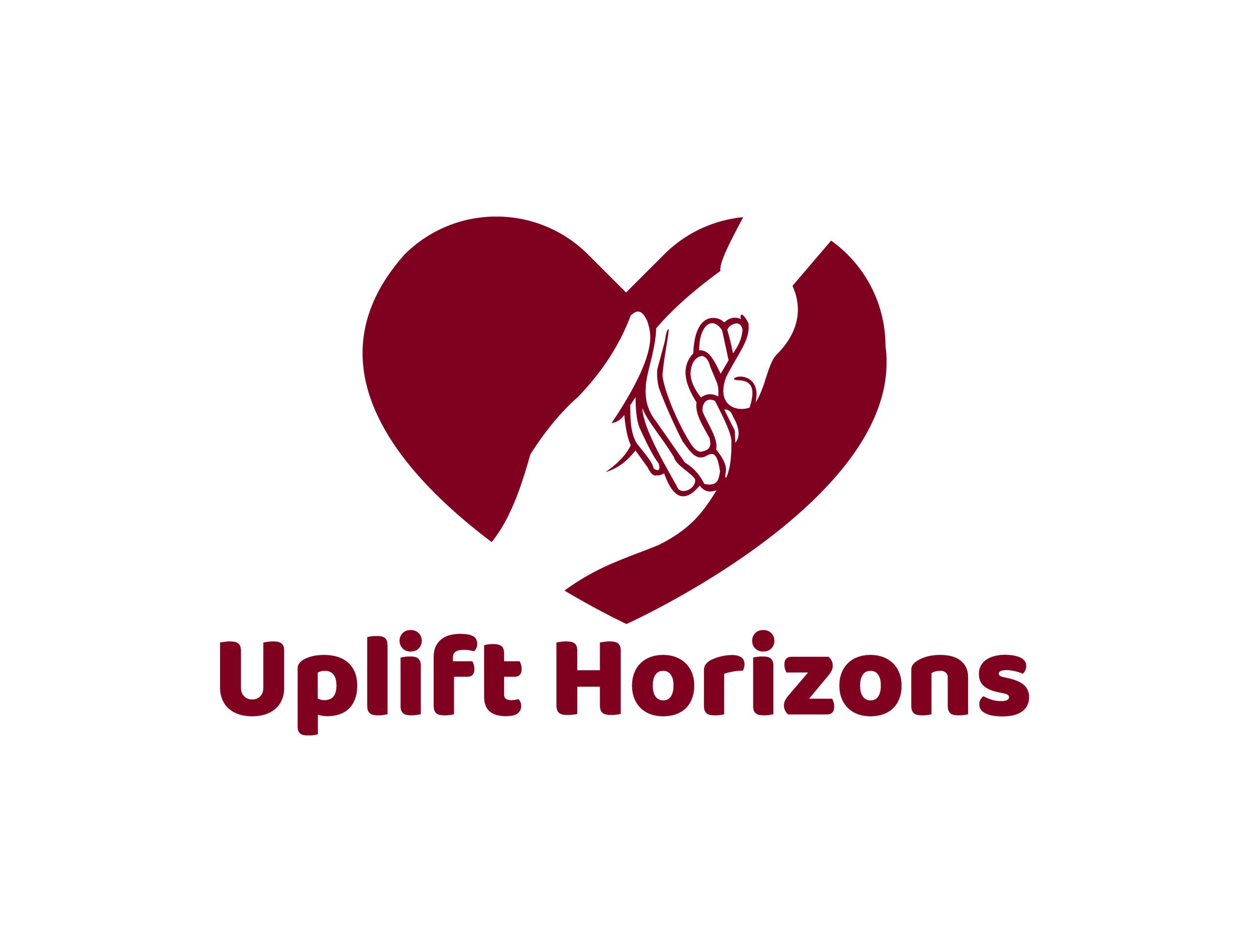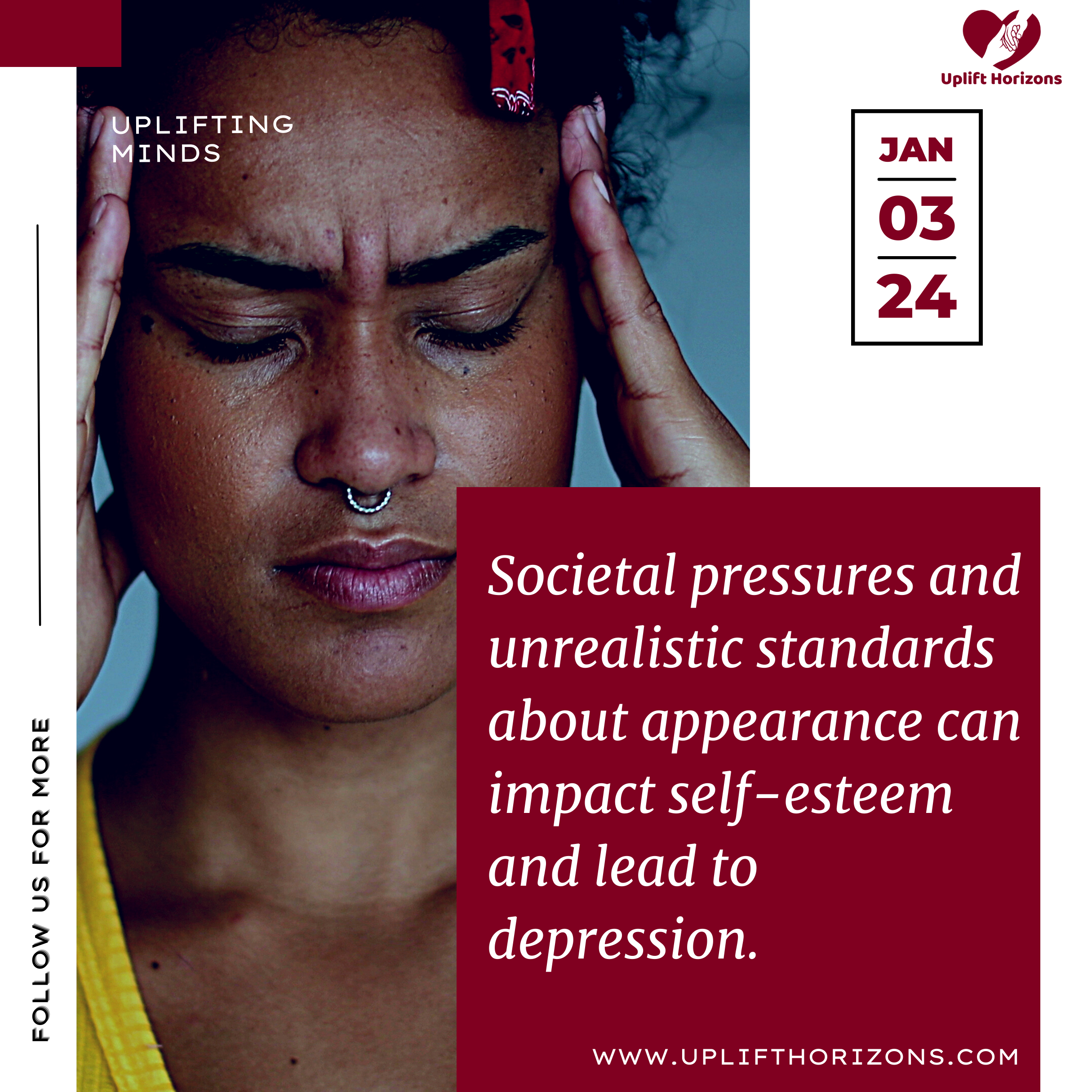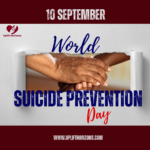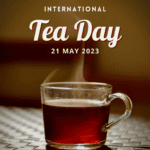In a world bombarded with images of perfection through social media, youths often find themselves grappling with unrealistic standards about appearance. The pervasive influence of societal pressures can significantly impact self-esteem and, in some cases, lead to depression. This article delves into the intricate relationship between body image issues and depression in youths, offering insights into effective management, coping strategies, and the vital role society plays in supporting the younger generation. s.
𝐓𝐡𝐞 𝐏𝐞𝐫𝐯𝐚𝐬𝐢𝐯𝐞 𝐈𝐧𝐟𝐥𝐮𝐞𝐧𝐜𝐞 𝐨𝐟 𝐔𝐧𝐫𝐞𝐚𝐥𝐢𝐬𝐭𝐢𝐜 𝐁𝐞𝐚𝐮𝐭𝐲 𝐒𝐭𝐚𝐧𝐝𝐚𝐫𝐝𝐬:
From airbrushed magazine covers to flawless social media influencers, the bombardment of idealized beauty standards is relentless. Take, for instance, the phenomenon of ‘𝐈𝐧𝐬𝐭𝐚𝐠𝐫𝐚𝐦 𝐯𝐬 𝐑𝐞𝐚𝐥𝐢𝐭𝐲,’ where influencers showcase meticulously curated images, creating an unattainable benchmark for the everyday person. The pressure to conform to these digitally altered ideals becomes a breeding ground for body image insecurities.
𝐄𝐱𝐚𝐦𝐩𝐥𝐞𝐬 𝐓𝐡𝐚𝐭 𝐒𝐩𝐞𝐚𝐤 𝐕𝐨𝐥𝐮𝐦𝐞𝐬:
Consider the ubiquitous presence of photo-editing apps that promise flawless skin, perfectly contoured bodies, and unrealistically small waists. These tools, while providing a veneer of perfection, contribute significantly to distorted self-perceptions. The prevalence of ‘𝐭𝐡𝐢𝐠𝐡 𝐠𝐚𝐩𝐬’ and ‘𝐰𝐚𝐬𝐡𝐛𝐨𝐚𝐫𝐝 𝐚𝐛𝐬’ as markers of beauty further exacerbates these challenges.
𝐈𝐦𝐩𝐚𝐜𝐭 𝐨𝐧 𝐌𝐞𝐧𝐭𝐚𝐥 𝐇𝐞𝐚𝐥𝐭𝐡:
Unrealistic beauty standards act as silent instigators of a mental health crisis among the youth. One notable study is the research conducted by Fardouly and Diedrichs, published in the journal “New Media & Society” in 2014, found a direct correlation between frequent exposure to such standards and heightened levels of anxiety and depression. The study is titled “The Impact of Appearance Comparisons Made through Social Media, Traditional Media, and in Person in Women’s Everyday Lives.”
𝐒𝐭𝐮𝐝𝐲 𝐎𝐯𝐞𝐫𝐯𝐢𝐞𝐰:
Authors: Fardouly, J., Diedrichs, P. C.
Year: 2014
Journal: New Media & Society
𝐊𝐞𝐲 𝐅𝐢𝐧𝐝𝐢𝐧𝐠𝐬:
The study investigated the impact of appearance comparisons, particularly through social media, traditional media, and in-person interactions.
Researchers found that women who engaged in frequent appearance comparisons on social media reported higher body dissatisfaction and increased pressure to conform to societal beauty standards.
Exposure to “thin ideal” images on social media platforms, where users often share selectively enhanced images, was associated with negative body image outcomes.
𝐈𝐦𝐩𝐥𝐢𝐜𝐚𝐭𝐢𝐨𝐧𝐬:
The study contributes to the understanding of how different modes of appearance comparison, especially through social media, may influence body image perceptions.
It highlights the role of social media in shaping beauty ideals and its potential impact on mental health, particularly in the context of body dissatisfaction. The ‘perfect’ images presented by influencers often clash with the reality of diverse body shapes and sizes, fostering a toxic narrative that erodes self-esteem.
![]()
![]()
𝐂𝐨𝐩𝐢𝐧𝐠 𝐒𝐭𝐫𝐚𝐭𝐞𝐠𝐢𝐞𝐬 𝐢𝐧 𝐭𝐡𝐞 𝐅𝐚𝐜𝐞 𝐨𝐟 𝐀𝐝𝐯𝐞𝐫𝐬𝐢𝐭𝐲:
𝐏𝐫𝐨𝐦𝐨𝐭𝐢𝐧𝐠 𝐒𝐞𝐥𝐟-𝐋𝐨𝐯𝐞: Encouraging self-acceptance and fostering a positive relationship with one’s body are crucial. This involves celebrating individuality and recognizing that beauty comes in diverse forms.
𝐌𝐞𝐝𝐢𝐚 𝐋𝐢𝐭𝐞𝐫𝐚𝐜𝐲: Educating youths about media literacy helps them decipher and critically analyze the messages conveyed through various media platforms. Understanding the role of digital enhancement and the unrealistic portrayal of beauty can reduce the impact of media-induced pressures.
𝐄𝐧𝐜𝐨𝐮𝐫𝐚𝐠𝐢𝐧𝐠 𝐎𝐩𝐞𝐧 𝐂𝐨𝐧𝐯𝐞𝐫𝐬𝐚𝐭𝐢𝐨𝐧𝐬: Creating a safe space for open conversations about body image helps break the stigma associated with these issues. Youths should feel comfortable discussing their insecurities without fear of judgment.
𝐏𝐫𝐨𝐦𝐨𝐭𝐢𝐧𝐠 𝐇𝐞𝐚𝐥𝐭𝐡𝐲 𝐋𝐢𝐟𝐞𝐬𝐭𝐲𝐥𝐞𝐬: Encouraging habits that contribute to physical and mental well-being, such as regular exercise and a balanced diet, can foster a positive body image.
𝐒𝐨𝐜𝐢𝐞𝐭𝐲’𝐬 𝐂𝐚𝐥𝐥 𝐭𝐨 𝐀𝐜𝐭𝐢𝐨𝐧:
𝐃𝐢𝐯𝐞𝐫𝐬𝐞 𝐑𝐞𝐩𝐫𝐞𝐬𝐞𝐧𝐭𝐚𝐭𝐢𝐨𝐧 𝐢𝐧 𝐌𝐞𝐝𝐢𝐚: Media and advertising industries should actively embrace diverse representations of beauty. By showcasing a variety of body types, ethnicities, and appearances, society can challenge the narrow standards that currently prevail.
𝐄𝐝𝐮𝐜𝐚𝐭𝐢𝐨𝐧𝐚𝐥 𝐈𝐧𝐢𝐭𝐢𝐚𝐭𝐢𝐯𝐞𝐬: Implementing educational programs in schools that focus on body positivity, mental health awareness, and media literacy can empower youths with the tools to navigate societal pressures.
𝐏𝐫𝐨𝐦𝐨𝐭𝐢𝐧𝐠 𝐈𝐧𝐜𝐥𝐮𝐬𝐢𝐯𝐢𝐭𝐲: Creating inclusive environments that celebrate differences rather than promoting exclusivity fosters a sense of belonging and reduces the impact of societal pressures.
𝐂𝐨𝐧𝐜𝐥𝐮𝐬𝐢𝐨𝐧:
To liberate the youth from the shackles of unrealistic beauty standards, society must actively engage in reshaping narratives. By acknowledging the damaging impact of these standards and providing real-world examples of change, we pave the way for a generation that embraces authenticity, self-love, and mental well-being. It’s time to rewrite the script and empower the youth to thrive in their unique identities.





